Quick Links
Narratives in games are a complicated matter. Where a book or a film can direct you scene-by-scene, knowing exactly what you'll perceive and where to leave hints, games don't have the same liberty. Even the most linear of games have to account for players sequence-breaking or simply playing in a way that conflicts with the tale being woven. That goes doubly so for open-world games or choice-based adventures.
An interesting way around this issue is how FromSoftware writes their worlds. Rather than having a single plot to follow, the world itself is the story being told. You piece it together at your pace, bringing its many aspects together to form a cohesive whole. The same is true of Elden Ring, though even it has some events it doesn't want you to miss, like The Shattering. Though explicitly told, the motivations behind it and when exactly it occurred are left for you to uncover, which can be a daunting task.
Establishment Of The Greater Will
To understand the importance of The Shattering of the Elden Ring, it is important to know why it is so prevalent in the first place. That reason is The Greater Will, a being known as an Outer God that manifested itself in The Lands Between through Marika. As an Empyrean, an individual capable of becoming a vessel for an Outer God, she became Queen Marika the Eternal. With this, The Lands Between were graced with Gold, and the Erdtree became a glimmering symbol across the entire land.
As a symbol of its power, the Elden Ring was bestowed upon Marika as a means to harness the power of The Greater Will. With this, the various runes within determined the rules of the world and established order. Core to Marika's usage of the Elden Ring was the removal of the Rune of Death, establishing a world without Death.
Of course, such a dramatic shift in religious practice required enforcement, and so the Golden Order was created under the guidance of Radagon. The Golden Order snuffed out all it deemed to be blasphemous, shunning natives of The Lands Between and exterminating followers of other religious beliefs, themselves likely other Outer Gods that could threaten the Greater Will. Though this militant religious order is what ensured the reign of Marika and the Greater Will, it was also ultimately their destruction.
Downfall Of The Eternal Cities, And The Night Of Black Knives
Of all the peoples ostracised by the Greater Will, the Eternal Cities were some of the foremost. Ancient cities associated with sorceries and their own unique constructions, their existence was an affront to the Greater Will. As such, they were punished. Their cities were sunk beneath The Lands Between and cursed with a sky of false stars. A third city was even destroyed in its entirety by Astel, Naturalborn of the Void, a celestial menace sent by the Greater Will.
The people of the Eternal Cities, the Nox, were of course furious at this and became a pliable horde of assassins. The Demi-God Ranni — child of Rennala of the Carian Nobles and Radagon of the Golden Order — held a much higher affinity with the Stars of her mother than the Greater Will of her father, and sought to end the rule of the Erdtree. Though cruel, Ranni gathered all dissenters she could, even hoping to enlist the help of her brother Rykard, to steal the Rune of Death and slay the Demi-Gods. Using the Nox women as assassins and crafting Black Knives from the Rune of Death, they set out to murder Godwyn the Golden, resulting in the first death of a Demi-God.
Ranni herself was also an Empyrean, using the Rune of Death to separate her body and soul so that the Greater Will could not use her as a vessel in the result of Marika's demise. An error resulted in only her body being destroyed, along with the soul of Godwyn, leaving them both in a form of deathless limbo. As such, her plan was a partial success in execution, though would ultimately succeed in its entirety.
The Shattering Of The Elden Ring
With the Night of Black Knives as a catalyst, Marika was thrown into a rage. Her motivations are still unclear, and whether the act was a spur-of-the-moment decision or pre-meditated. But with nary a slipping notion, Marika shattered the Elden Ring using the very same hammer she used to forge it in the first place, instantly throwing the world into disarray.
The key to understanding this is that Marika and Radagon are the same individual. Where Radagon paraded the world singing the praises of the Greater Will and fighting for its glory, Marika was left within Leyndell as its vessel and a symbol. Her own frustrations that the Greater Will, in all its supposed omnipotence, could not protect her children, are likely the reason for her wavering faith and ultimate destruction of the ring.
Radagon felt the opposite and strove to repair the Elden Ring, trapping the self-same duo in a bitterly ironic eternal conflict. As punishment, the Greater Will imprisoned Marika (and as a result Radagon as well) within the Erdtree, and also so the Elden Ring could not be further scorned. All this while, Radagon tried to mend the shattered pieces, but it was too scattered. With The Shattering, the runes spread across the world and were taken by the various Demi-God children of the duo, and war broke out across The Lands Between as chaos descended upon the world.
The Greater Will, though still using Marika as its vessel, no longer had the power it once had. The decaying corpse of Godwyn rotted the roots of the Erdtree, stopping the Greater Will from absorbing the essence of those who died. No Empyrean remained in a physical form for which it could use as a more suitable vessel. Just like Marika, it was trapped, only hoping for one to come along to eventually repair the Elden Ring and restore it to divinity.
The Battles Of The Demi-Gods
Following The Shattering, the shards of the Elden Ring were scattered across the land to the various Demi-Gods, all fighting for their own means. It is unknown for how long these battles went on, though the scars left by the Shardbearers remain until the current time of the game. These battles were fundamental in determining the current power balance of The Lands Between, even if most of the bloodshed ultimately ended in a stalemate.
The first of the major battles took place at Leyndell, the Royal Capital, home of the Erdtree. Morgot, Omen child of Marika and Godfrey and the first true Elden Lord, dutifully defended the walls of the capital against all invaders. Many children of the Golden Lineage, direct descendants of Marika, fell the capital during this time, most notably the cowardly Godrick.
Though another member of the Golden Lineage, Godefroy, fought valiantly to claim the capital, he employed the practice of grafting others to himself to bolster his abilities. It was an act later practiced by Godrick to gather the lingering vestiges of Grace from the returning Tarnished. After many assaults, Leyndell remained standing, its inner walls unbreached. Morgot remained, awaiting the return of either of his parents to their rightful throne.
Rykard, another Demi-God whom Ranni attempted to enlist in the Night Of Black Knives but turned her down, had plenty of blasphemous beliefs himself. Rather than striving for freedom explicitly from the Greater Will, Rykard more directly opposed the Erdtree as a symbol of The Lands Between, hoping to utilize the volcanic flame of Mt. Gelmir to bring ruin. He set up a retinue of accusants who opposed the rule of the Erdtree, well-prepared for these treasonous acts due to Ranni's forewarning. As such, he avoided many of the initial battles, secluding himself while building an army of his own to destroy the Erdtree, even to this day.
Perhaps most major of the immediate battles following The Shattering were the conquests of Malenia. Known as Malenia the Undefeated, she succeeded in every battle she partook in, leaving a trail of swords in her wake. General Radahn the Starscourge was much the same, an incredibly accomplished military leader without a significant loss to his name. Being such worthy adversaries, they clashed in Caelid.
It is hard to say who was truly the victor, though undeniably the region of Caelid was left much the worse for wear. Malenia succumbed to the Scarlet Rot that afflicted her body and destroyed Caelid with it, though wore herself next to death. In the face of this, General Radahn was reduced to nothing but a rotted beast with bloodshed on his mind, yet he still never truly died to the Rot, roaming the wilds in hope of a final adversary.
Others went mostly unaccounted for during the wars following The Shattering. Ranni for one faded into obscurity, her name almost being forgotten entirely. In truth, with her body lost and in need of a vessel itself, it's highly likely she simply didn't exist in a physical form for quite some time after The Shattering. Others, like Mohg — another child of Marika and Godfrey, and brother to Morgot — remained underground by the ruined Eternal City of Nokron in the Siofra River, building his own dynasty.
For him, The Shattering felt justified, the Greater Will brought to its knees for punishing him for the simple act of existing. He communed with the Formless Mother, another Outer God, and kidnapped his half-brother Miquella in hopes of using him as the Empyrean vessel. The timeline is vaguer on when this occurred, though it was before Malenia was returned to the Haligtree after her battle with Radahn, as she constantly awaited Miquella's return ever since she awoke upon her return.
The Return Of The Tarnished
From that point on, much of The Lands Between lay locked in a stalemate. Malenia, weakened and awaiting her brother, remained at the Haligtree. Godrick, exerting what little noble lineage he had, stayed at Stormveil Castle to exercise his control over Limgrave. Radahn remained the same crazed beast, a festival erected in his honour to give him a warrior's death, though none have yet succeeded. Rykard remains at Mt. Gelmir, though has now become fused with the God-Devouring Serpent. However, his goals remain the same, so it is something of a symbiotic union. The world is weary, and awaiting a new Elden Lord, any semblance of order once again.
Long ago, Grace faded from the eyes of the Tarnished, at that point nobles and royal retainers. Seen as blasphemous folk, they were hunted from The Lands Between, Godfrey amongst them having also lost the Golden hue of Grace from his eyes. However, with the Elden Ring shattered, Grace has once again returned to the Tarnished, likely a last-ditch effort by the Greater Will to restore its power in The Lands Between. Of course, that result is for the Tarnished to decide. The Elden Ring is shattered, but it need not be simply repaired. It may be improved, or even removed in its entirety. The Blessing of Grace may well be a Curse for the Greater Will.

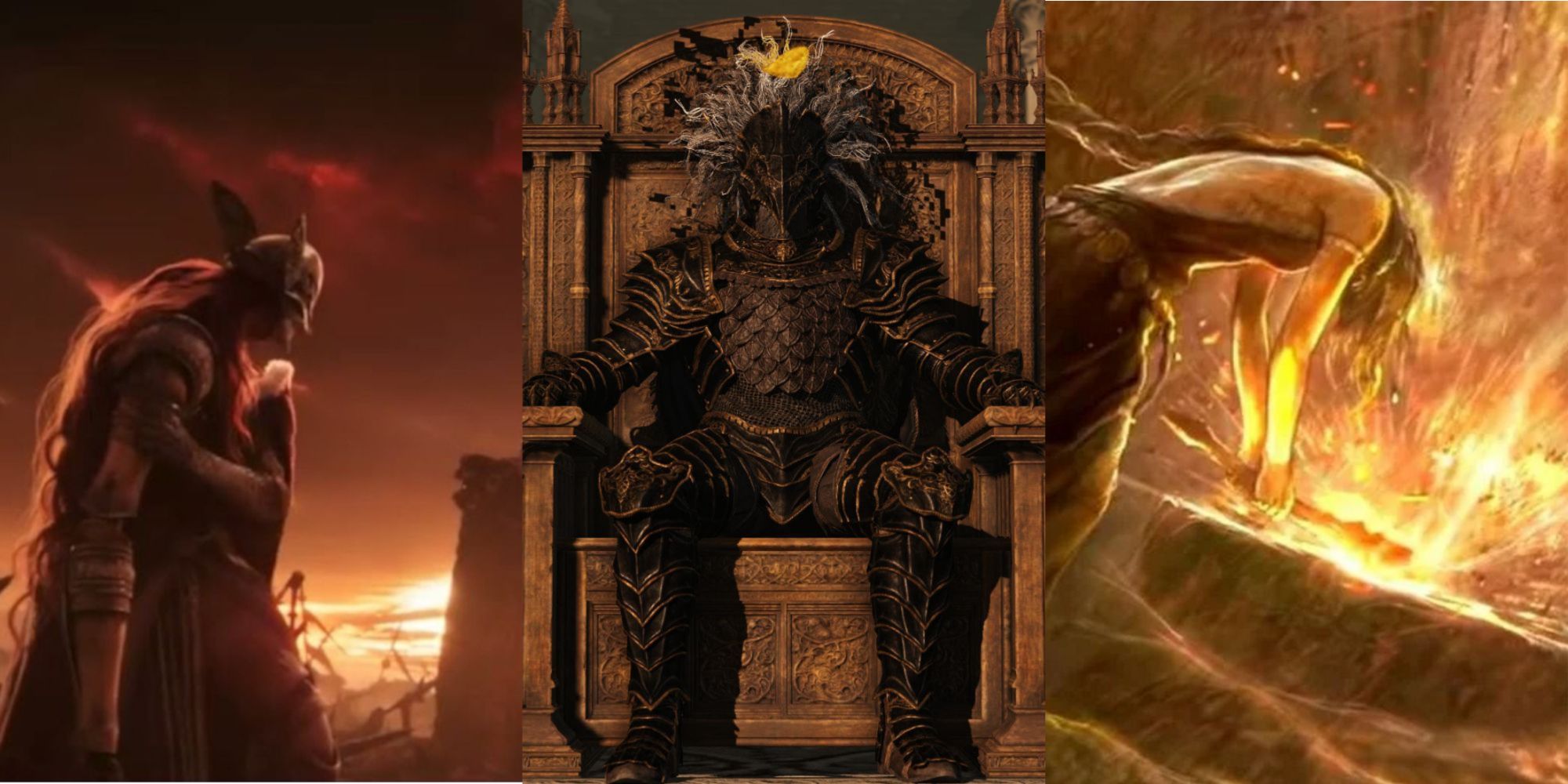
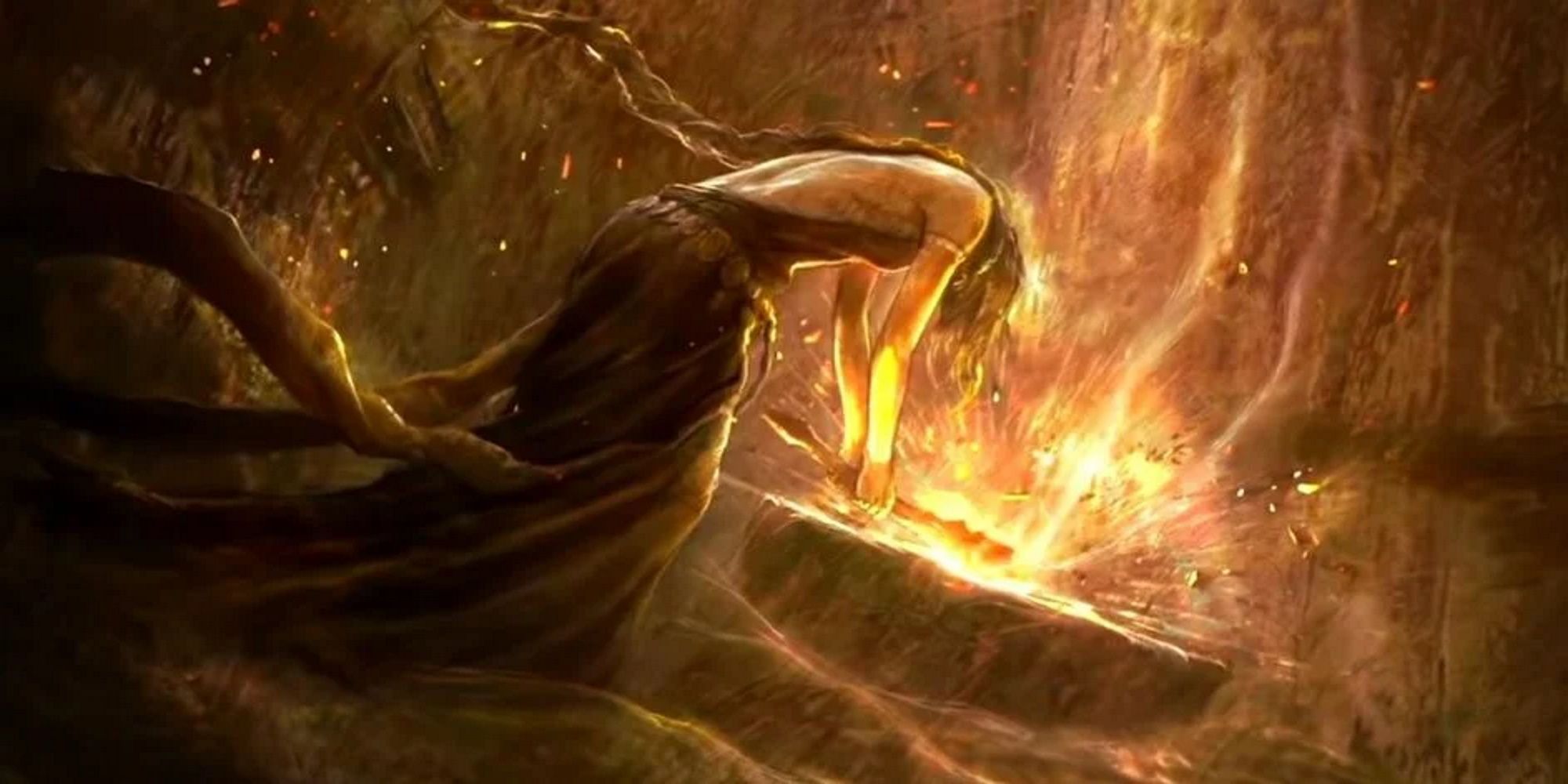
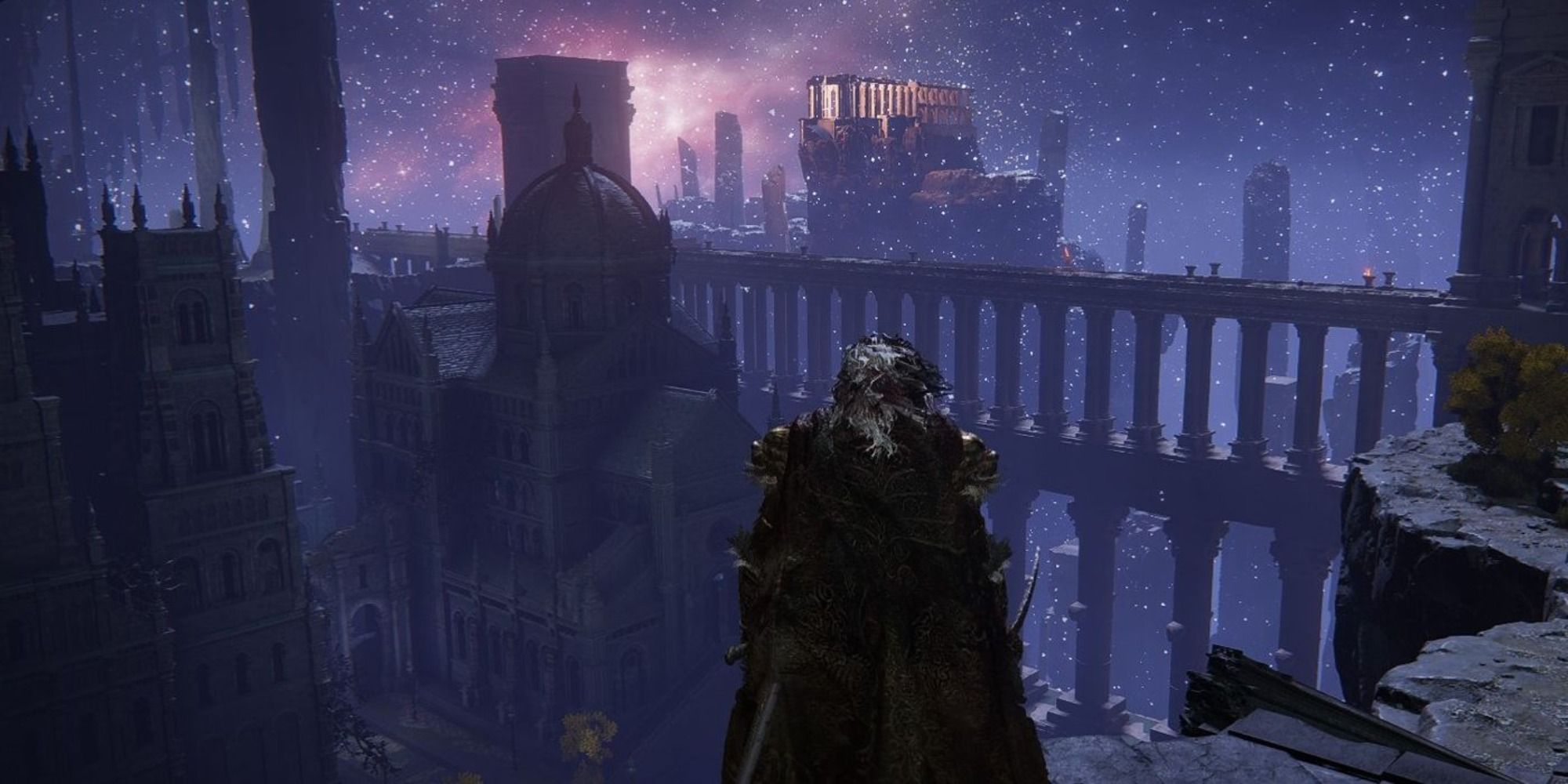
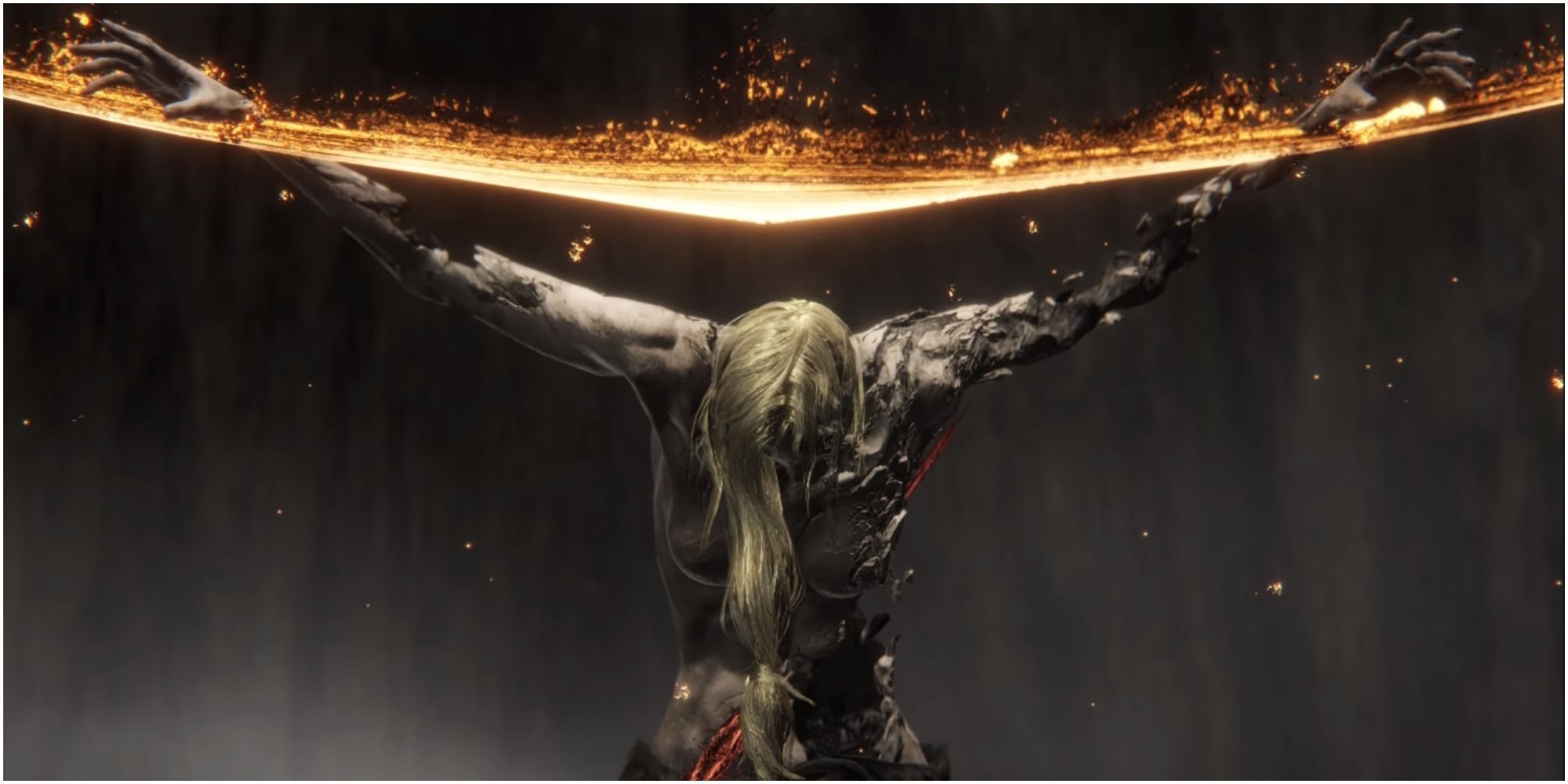
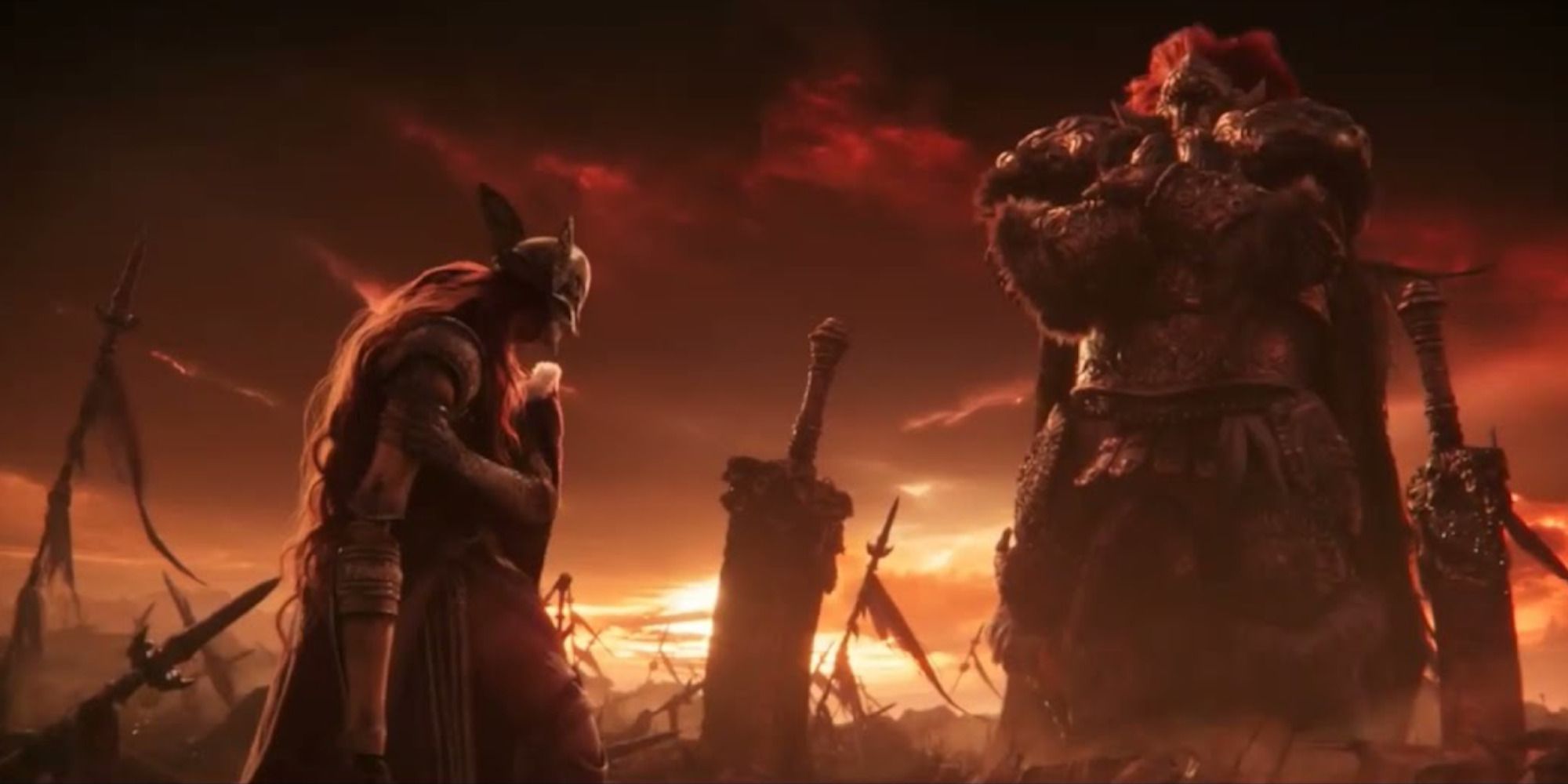
.jpg)